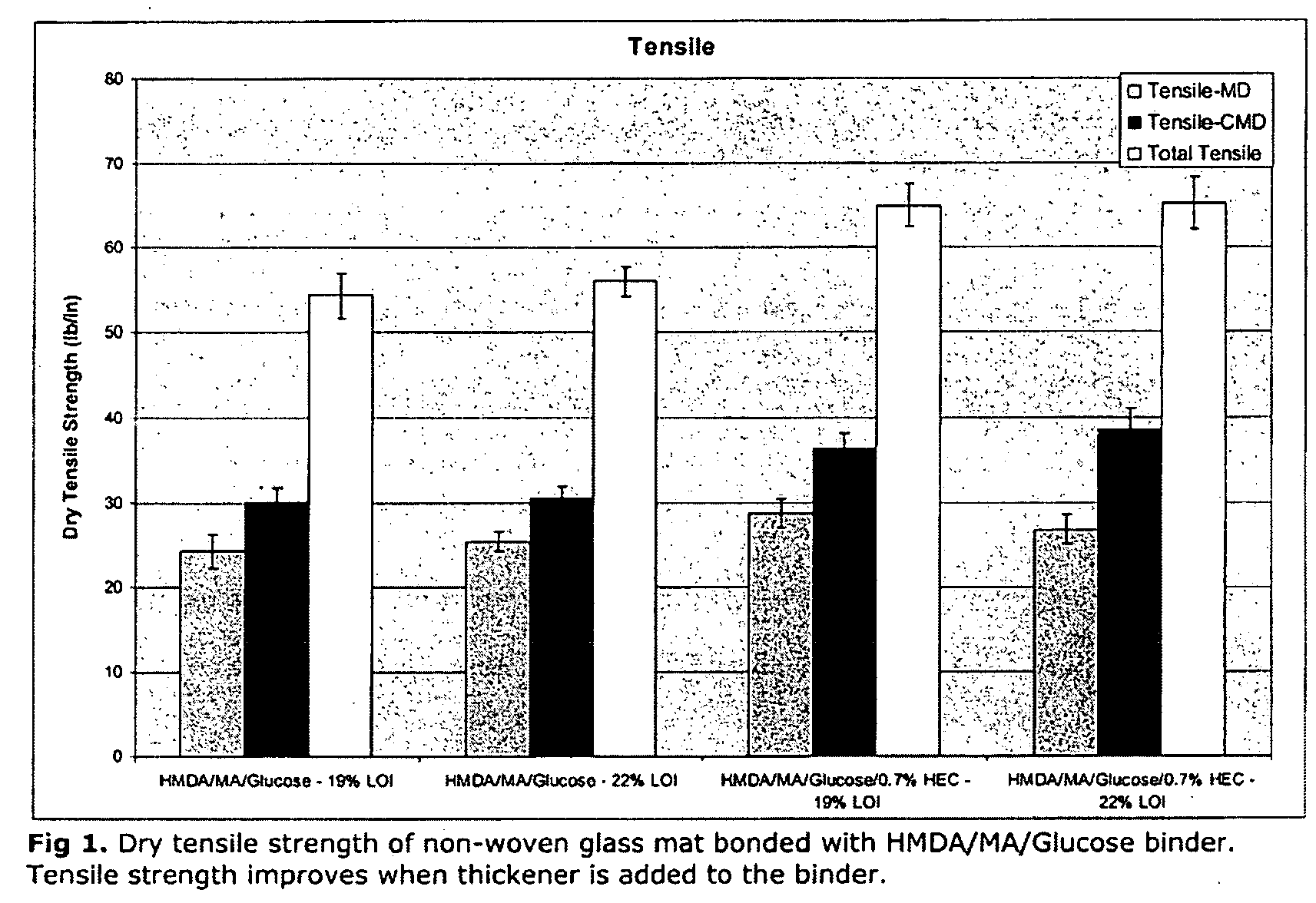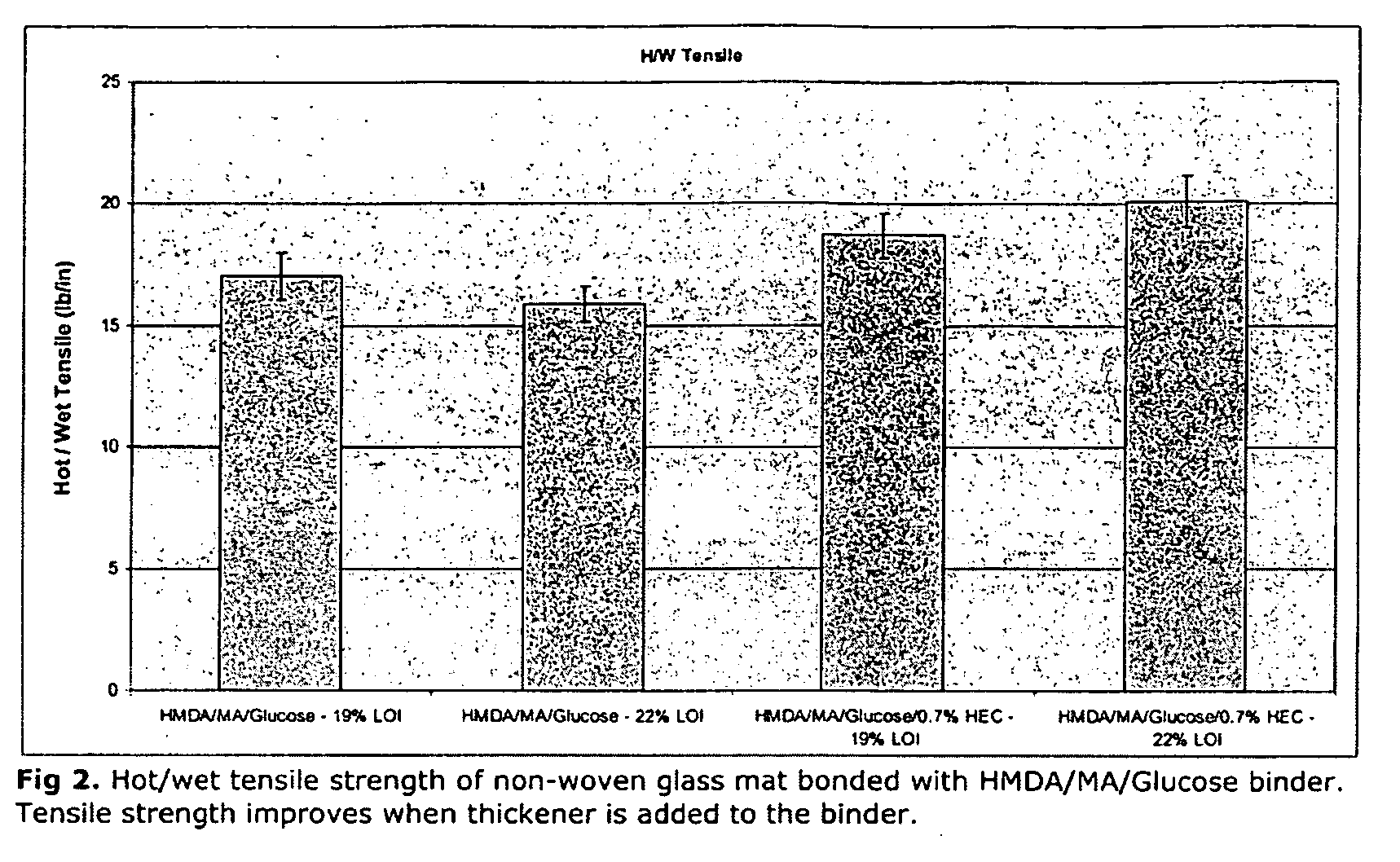Curable fiberglass binder
- Summary
- Abstract
- Description
- Claims
- Application Information
AI Technical Summary
Benefits of technology
Problems solved by technology
Method used
Image
Examples
example 1
[0061]A binder composition was prepared using the following constituents:
drydrymassmasstotalcomponent[%][%]73.95kgbinder G4.53573.950.7kgLutensol ®501M76.26kgWater019.02kgCarbofin ®4625L29510.0175kgdefoamer1000.05
example 2
[0062]A binder composition was prepared with the following components:
72.95kgbinder G4.53572.950.7Lutensol ®501kgM76.56kgWater019.02kgCarbofin ®4625L29510.7kgSilquest ®501A11000.0175gdefoamer1000.05Binder G4.5 comprises the following components: 30.1% Water soft, 6.2% HMDA (70%) (1,6-Diaminohexane), 3.7% Maleic anhydride, 57.0% Dextrose (71% liquid), 2.4% Ammonium sulfate, 0.4% Skane M8 ® (Rohm&Hass), 0.2% Copper sulfate pentahydrate, percentages based on total weight of binder G4.5.Lutensol ® M7 (BASF) is a non-ionogenic tenside, Carbofin ® L2951 (Rockwood Pigment NA, Inc) is a carbon black emulsion; Silquest ® A1100 is an amino-silane.
[0063]The composition was applied to a 60 g / m2 glass fiber nonwoven. The binder content was 16% based on the total mat weight.
PUM
| Property | Measurement | Unit |
|---|---|---|
| Percent by mass | aaaaa | aaaaa |
| Percent by mass | aaaaa | aaaaa |
| Percent by mass | aaaaa | aaaaa |
Abstract
Description
Claims
Application Information
 Login to View More
Login to View More - R&D
- Intellectual Property
- Life Sciences
- Materials
- Tech Scout
- Unparalleled Data Quality
- Higher Quality Content
- 60% Fewer Hallucinations
Browse by: Latest US Patents, China's latest patents, Technical Efficacy Thesaurus, Application Domain, Technology Topic, Popular Technical Reports.
© 2025 PatSnap. All rights reserved.Legal|Privacy policy|Modern Slavery Act Transparency Statement|Sitemap|About US| Contact US: help@patsnap.com


